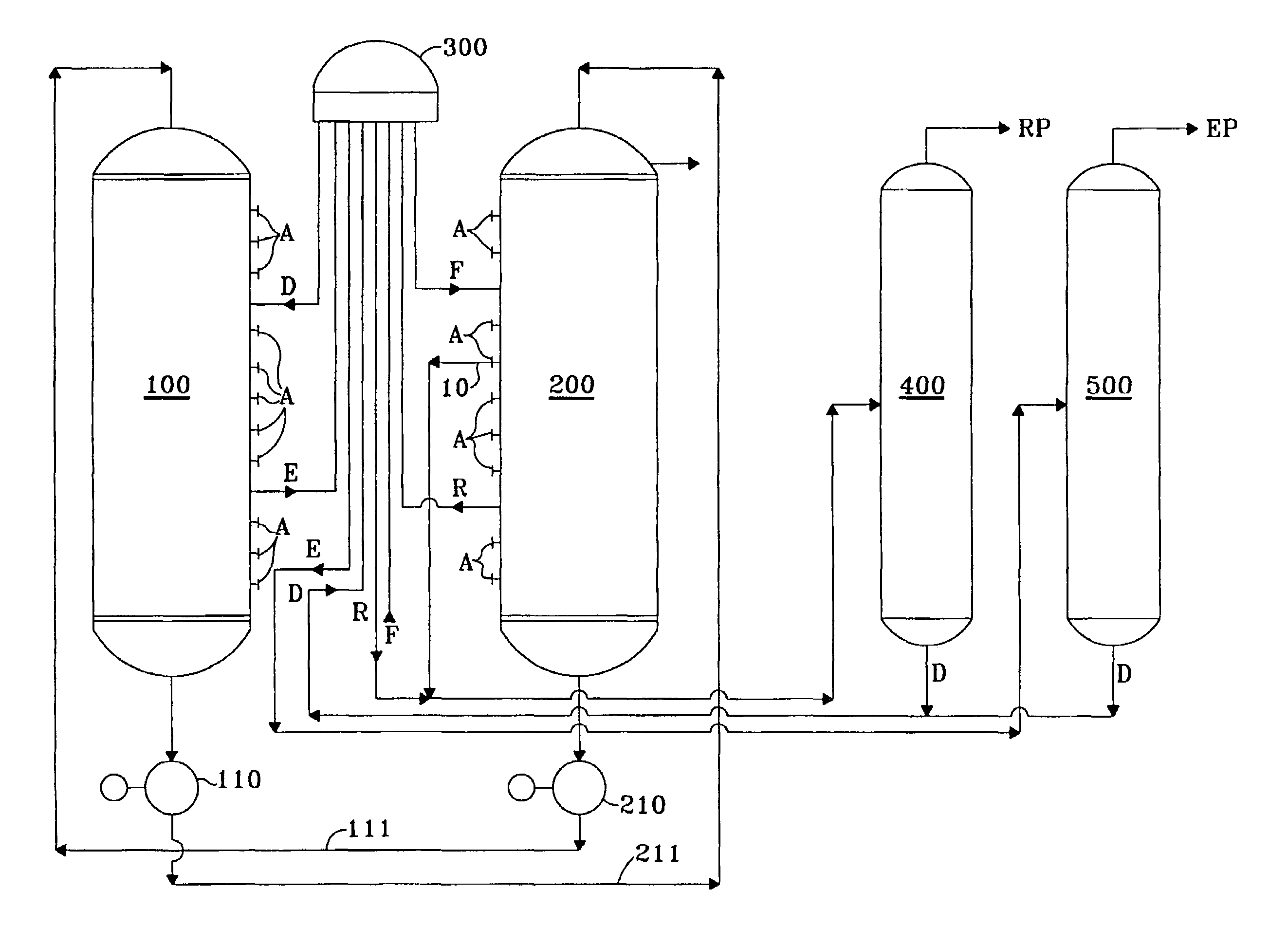Product recovery from simulated-moving-bed adsorption
a technology of moving bed and product recovery, which is applied in the direction of hydrocarbon purification/separation, chemistry apparatus and processes, and organic chemistry, etc., can solve the problems of affecting the effect of residual compounds in the transfer lin
- Summary
- Abstract
- Description
- Claims
- Application Information
AI Technical Summary
Benefits of technology
Problems solved by technology
Method used
Image
Examples
examples
[0025]In order to verify the improvement expected from the invention, a comparison was performed for the recovery of meta-xylene and of para-xylene from C8 aromatics using a computerized model which has been shown to accurately predict and correlate with the actual operation of commercial scale simulated-moving-bed adsorptive separation units used to recover meta-xylene and of para-xylene from a mixture of xylene isomers. The simulated unit had twenty-four beds of adsorbent divided between two columns and a twenty-four port rotary valve to direct the flow of the process streams. Feedstock compositions were as follows in wt.-% for the two product targets:
[0026]
Meta-xylenePara-xyleneToluene0.010.33Ethylbenzene24.039.35Para-xylene2.0121.68Meta-xylene64.7850.03Ortho-xylene8.3116.91Non-aromatics0.861.70
Results were as follows, adjusting the relative amount of feed when effecting raffinate flush away from the chamber to normalize product purity / recovery:
[0027]
Meta-xylene recovery:CaseDesc...
PUM
| Property | Measurement | Unit |
|---|---|---|
| temperature | aaaaa | aaaaa |
| temperature | aaaaa | aaaaa |
| pressure | aaaaa | aaaaa |
Abstract
Description
Claims
Application Information
 Login to View More
Login to View More - R&D
- Intellectual Property
- Life Sciences
- Materials
- Tech Scout
- Unparalleled Data Quality
- Higher Quality Content
- 60% Fewer Hallucinations
Browse by: Latest US Patents, China's latest patents, Technical Efficacy Thesaurus, Application Domain, Technology Topic, Popular Technical Reports.
© 2025 PatSnap. All rights reserved.Legal|Privacy policy|Modern Slavery Act Transparency Statement|Sitemap|About US| Contact US: help@patsnap.com


